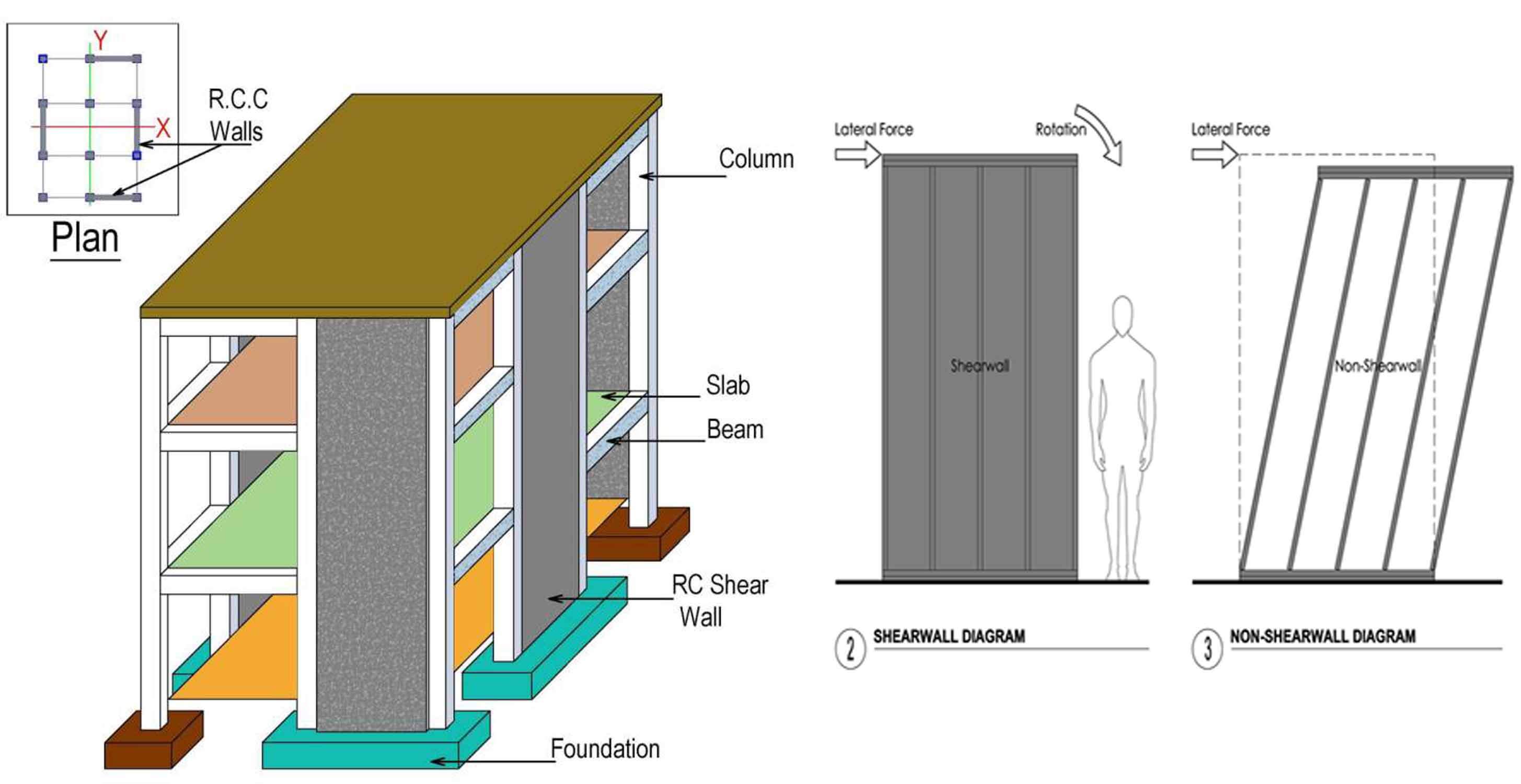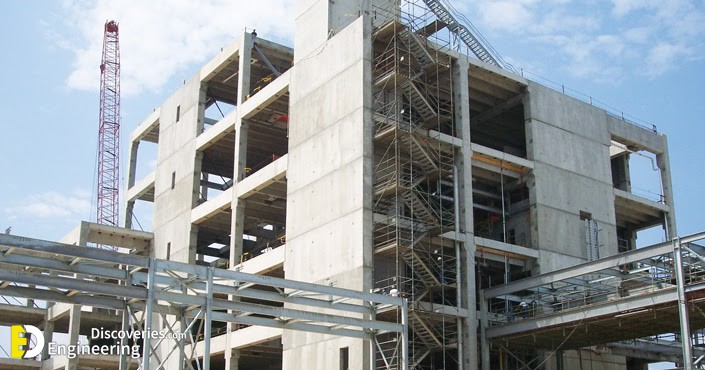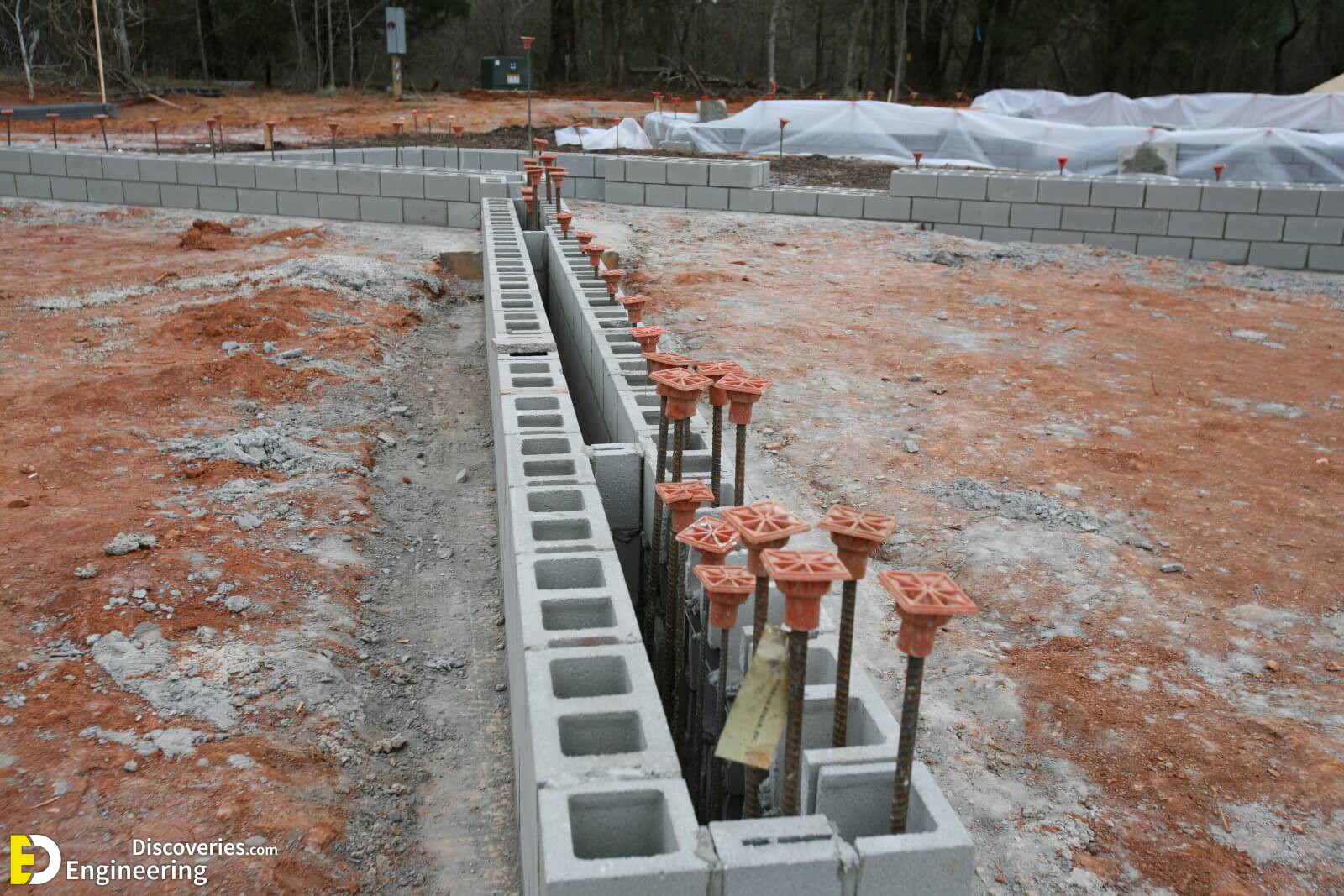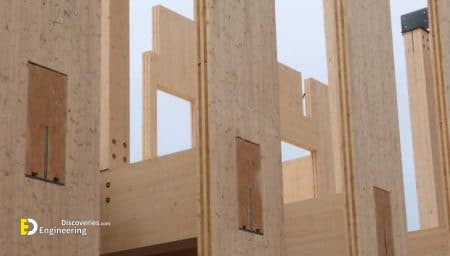Shear wall is a vertical structural element used to resist the horizontal forces such as wind force, seismic force. These forces act parallel to the plane of the wall. Shear walls are generally used in high rise buildings where the effect of wind forces and seismic forces is more.
Types of Shear Walls
Based on the type of material used, shear walls are classified into the following types.
1- Reinforced Concrete Shear Wall
2- Concrete Block Shear Wall
3- Steel Shear Wall
4- Plywood Shear Wall
5- Mid-Ply Shear Wall.
1- Reinforced Concrete Shear Wall
Reinforced concrete shear walls are widely used shear walls for residential buildings. The reinforcement is provided in both horizontal and vertical directions. But at the end of each wall, bars are closely spaced and anchored. So, the end zones of RC shear wall is called as boundary elements or barbells. The wall thickness of RC shear wall is varied depending upon many factors like thermal insulation requirements of the building, age of the building, number of floors of building etc. It varies from 140 mm to 500 mm. In general, the provision of a shear wall is continuous throughout the height of building. But sometimes it is discontinued where there is a building entrance or parking space etc.
2- Concrete Block Shear Wall
Concrete block shear walls are constructed using Hollow concrete blocks along with Steel reinforcement bars. Reinforcement is generally used to maximize the effect of concrete block masonry against seismic loads. The Reinforcement bars are arranged through spaces of concrete blocks in both vertical and horizontal directions. After placing bars in concrete block masonry, fresh concrete grout is poured into the hollow space and is allowed to set. This type of walls can take both gravity loads and lateral loads. So, they can work like a shear wall as well as a load-bearing wall.
3- Steel Shear Wall
Steel shear wall consists of a steel plate wall, boundary column and horizontal floor beam. The action of the steel shear wall is more like a plate girder. Steel plate wall acts as a web of a plate girder, boundary columns act as flanges and horizontal beams acts as stiffeners of a plate girder.
4- Plywood Shear Wall
Plywood shear walls are traditional type walls which are also called as timber shear walls. It consists of plywood sheets and studs. Plywood sheets transfer shear force while studs resist the tension or compression. Nowadays plywood shear walls are redesigned using new technological advancements. Steel sheets, sure boards etc. are using in place of plywood.
5- Mid-Ply Shear Wall
Mid-ply shear wall is an improved version of normal plywood shear wall. In this case, the extra plywood sheet is arranged at the centre of normal plywood wall and a series of pairs of studs are positioned on both sides of mid-ply. Studs joint the mid-play with outer plywood sheets. Here, Studs are rotated to 90 relative to those is plywood shear walls. The mid-ply shear wall eliminates the problems caused in standard shear walls and lateral load carrying capacity is higher for mid-play shear walls.






